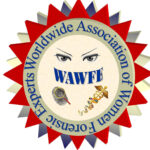Updates on Standards and Best Practice Recommendations for Human Forensic DNA Testing
Home » Updates on Standards and Best Practice Recommendations for Human Forensic DNA Testing
- Session
Updates on Standards and Best Practice Recommendations for Human Forensic DNA Testing
- November 1, 2022 //
- 1:50 pm -
- 2:10 pm //
- Woodrow Wilson Ballroom
A number of Standards and Best Practice Recommendations for human forensic DNA testing laboratories have been drafted, developed and published since the establishment of the Organization of Scientific Area Committees for Forensic Science (OSAC) and the American Academy of Forensic Sciences Academy Standards Board (ASB) a few years ago. An overview of the Standards and Best Practice Recommendations that have been published by ANSI/ASB, posted on the OSAC Registry, and those in progress on a variety of topics will be presented.
These include:
- DNA mixture interpretation validation and protocol development, including probabilistic genotyping and statistical analyses;
- Validation of various DNA and serological testing methods;
- Analyst training;
- Use of elimination databases, contamination prevention, monitoring and mitigation, and reporting of profiles impacted by contamination or failed controls.
Additional information regarding training webinars and the implementation of the documents in forensic laboratories will be provided. Also discussed will be insights into the processes for drafting and developing standards at OSAC and ASB and how interested individuals can get involved.
A number of Standards and Best Practice Recommendations for human forensic DNA testing laboratories have been drafted, developed and published since the establishment of the Organization of Scientific Area Committees for Forensic Science (OSAC) and the American Academy of Forensic Sciences Academy Standards Board (ASB) a few years ago. An overview of the Standards and Best Practice Recommendations that have been published by ANSI/ASB, posted on the OSAC Registry, and those in progress on a variety of topics will be presented.
These include:
- DNA mixture interpretation validation and protocol development, including probabilistic genotyping and statistical analyses;
- Validation of various DNA and serological testing methods;
- Analyst training;
- Use of elimination databases, contamination prevention, monitoring and mitigation, and reporting of profiles impacted by contamination or failed controls.
Additional information regarding training webinars and the implementation of the documents in forensic laboratories will be provided. Also discussed will be insights into the processes for drafting and developing standards at OSAC and ASB and how interested individuals can get involved.
- Early Registration
- $250.00
- Standard Registration (after July 15)
- $295.00
- Student Registration$195.00
- $195.00
Workshop currently at capacity. A waitlist is available to join on our registration page.


